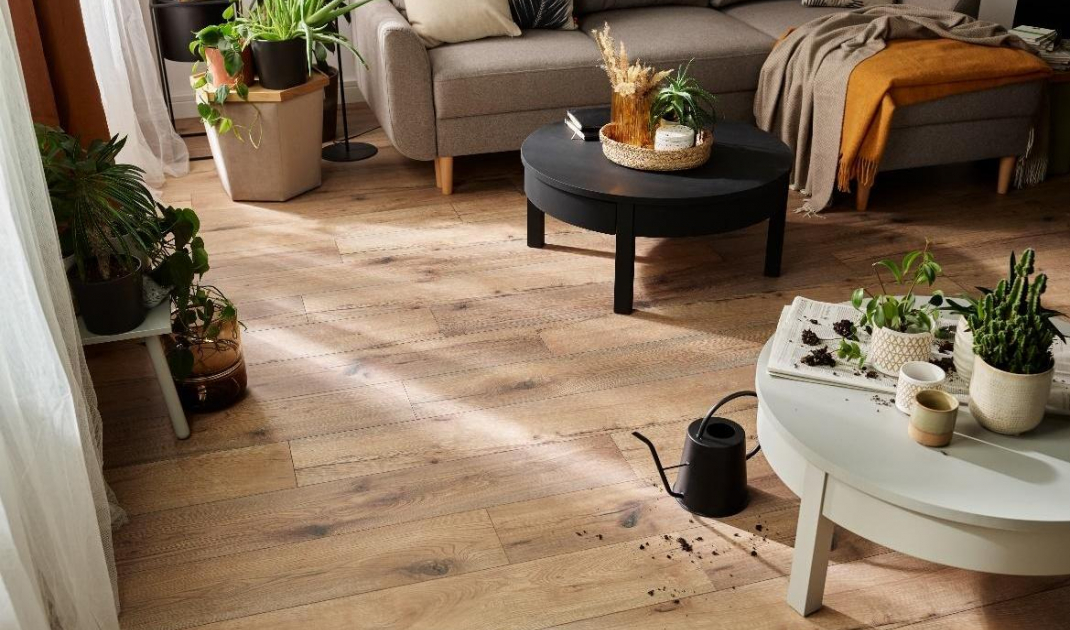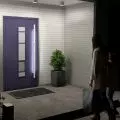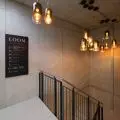The floor is one of the most important elements of the interior. It is its color and material that determines the effect you will get. Laying laminate is a great way to finish the floor easily, quickly and relatively inexpensively. However, here it is not only the appearance that matters. After all, every day it has to stand up to many demands. Mud in the hallway brought on the soles, traces of wet pets' paws in the living room or water dripping from the jacket are just a few of the occasions when we can get a lot of damage with the wrong choice of flooring.
When choosing a floor, the first thing to consider is the individual tastes of the household members, the type of room and its aesthetics. Regardless of the choice of specific panels, it is worth thinking about the interior comprehensively already at the stage of designing our apartment or house. In addition to the floor, you also need to find the right underlay and skirting board, which will both protect our walls and complement the character of the interior.
Thanks to WR technology, the modified HDF board and improved lock design in the panel prevent the backing board from absorbing water for up to 24 hours
© VOX
Water-resistant panels
If you choose a floor with enhanced water resistance, you don't have to worry about accidentally spilled liquid, as it won't penetrate the panel immediately.
Laminate panels with increased water resistance are suitable for both the bathroom (except for the shower and bath area) and the living room, where we spend many hours with loved ones. Thanks to special WR(water resistance) technology, the backing board can be prevented from absorbing water for up to 24 hours. This particular type of panel is suitable for both the bathroom (except for the shower and bath area) and the living room, where we spend many hours with loved ones. However, not all laminate panels are waterproof, and we should always check this with the manufacturer.
Vinyl panels (also called LVT - LuxuryVinylTiles) are made of 100% plastic. This composition gives it excellent resistance to moisture. When water settles on vinyl floors, even for a long time, it will not damage the surface. Such material does not swell and does not swell when in contact with water. This is a better choice if we assume that in a particular room we will often have to deal with high humidity. For example, they are ideal for kitchens, bathrooms, laundry rooms and basements, as well as public areas.
With the vinyl version, we will avoid swelling and delamination of the panels
© VOX
The construction of the panels is important
Laminate and vinyl panels are characterized by layered construction, but they differ in the raw material used for production.
The top part of laminate panels is formed from laminate (plastic) or from several layers of reinforced paper. The pattern is printed and is covered with a layer of resin to protect it from abrasion and water influence. Underneath is the core, which is often made of hard wood-based MDF or, more often, HDF. The strength of the core determines resistance to dents or impacts. On the bottom, in turn, we have several layers of reinforced paper or laminate, providing better stability.
The vinyl panel is distinguished by multiple layers: this translates into its technical performance. On the vinyl layer is a decor covered with transparent PVC with high abrasion resistance. Below that is usually a backing layer made of HDF board. Underneath, there may be a cork backing, which provides thermal insulation and sound attenuation.
Perfectly reproduced wood structure adds a sense of warmth to the interior
© VOX
Colors and structure
A rich choice of colors characterizes both laminate and vinyl flooring.
The former most often differs in texture: synchronous is characterized by the transfer of the drawing of the wood to the top layer, so that the grain and knots can be felt under the fingers, and the wood structure reproduces the color of the material. Some of the decors also come in a matte or gloss option.
If you want to use less traditional colors, bet on vinyl flooring. Here the range is very wide. Thanks to a special application of varnish , the floor imitates wooden planks, but also cement and concrete.
It's pleasant to walk barefoot on a vinyl floor
© VOX
So what to choose vinyl or laminate?
Although these two types of flooring have a lot in common, there are a few key differences. We should take these into account when making our decision.
- Both materials are easy to keep clean. Simply wipe, vacuum or sweep as needed. We don't need special cleaners or machines to keep these floors in good condition. These types are also considered the most economical flooring options.
- Laminate panels have been popular for years, mainly because of their rich color choices, various finish standards and wide price range. However, we should keep in mind that they have a shorter lifespan than, for example, parquet, and cannot be renewed by sanding.
- Vinyl panels are known for their durability, resistance to damage and sound absorption, and they can also be renovated by applying special polymer-acrylic or polyurethane coatings. For this purpose, we should use the preparations indicated by the manufacturer of the panels in question.
- As for the price range, it all depends on the quality of the products. Laminate is sometimes available at lower prices compared to vinyl. It depends on the type of style and features you are looking for. On the market we can find vinyl panels even several times more expensive than the laminate version.
When we are looking for inexpensive and easy-care floors, vinyl and laminate are often the first two suggestions we get. Remember that the floor stays with us for years, so first of all, let's match it to our needs.
For more information, visit the company's VOX page on the PdD portal.






























